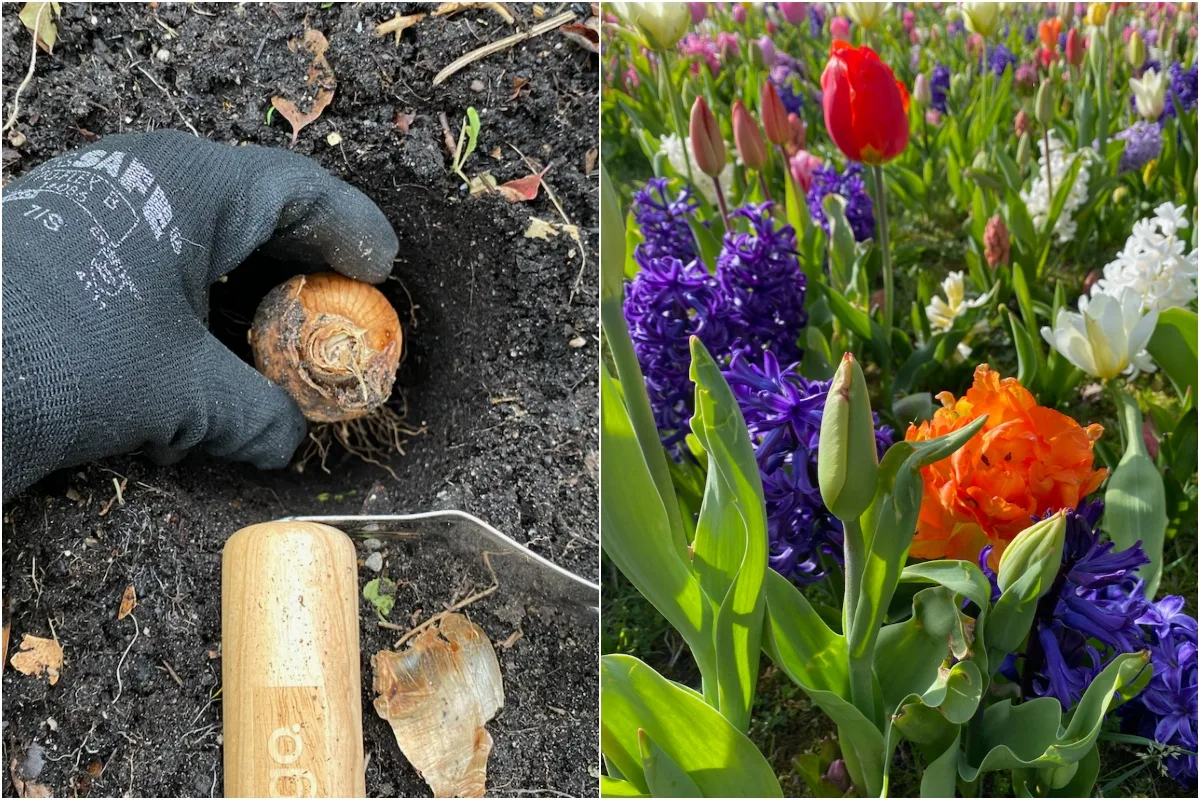
We’ve had a very warm October this year, so I’ve postponed the task of planting spring bulbs from one Saturday to another until November rolled around.
On the one hand, my fingers were itching to start digging and get bulbs in the ground. But on the other hand, I knew that biding my time now would make a difference in the quality of my spring blooms. Like a lot of gardening tasks, what we do (or don’t do) when we plant bulbs will influence the result come springtime. For better or for worse.
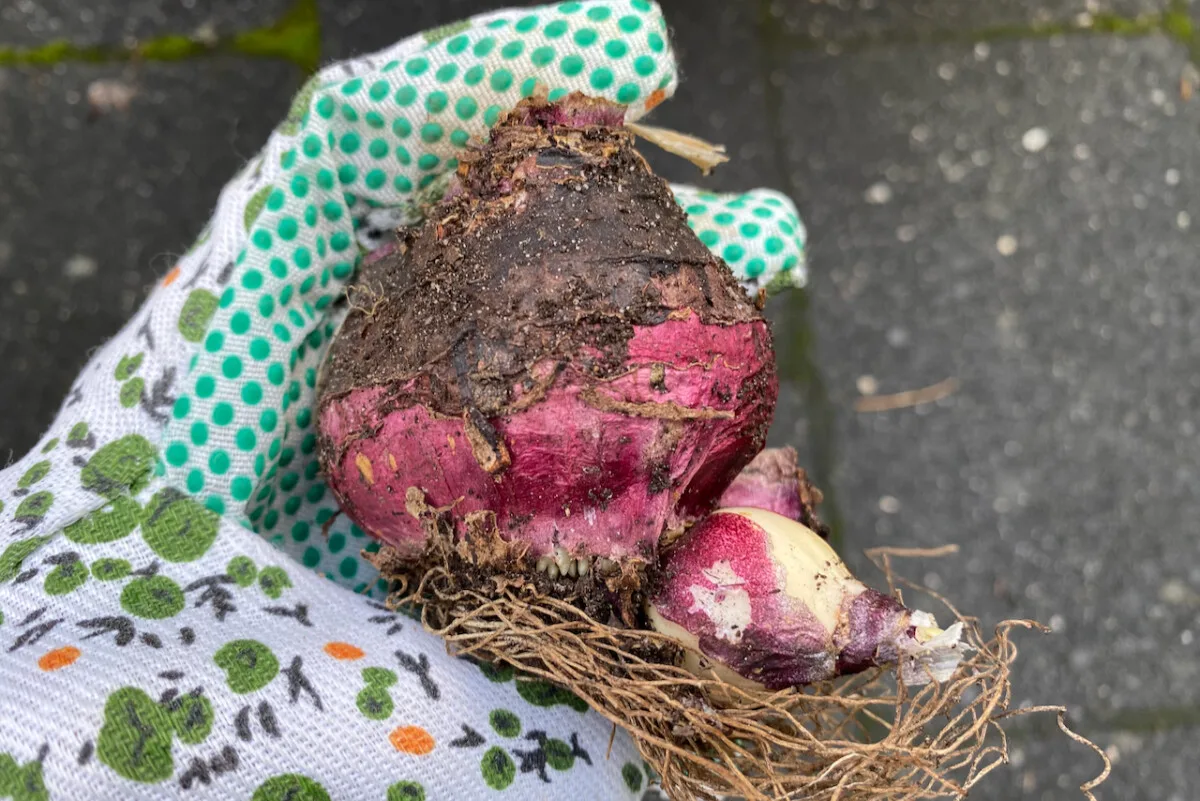
Putting bulbs in soil that was still warm would have been a mistake. One that I’ve made before and I’m committed not to repeat.
Here are a few other mistakes we should avoid when we’re planting spring bulbs. And yes, most of them I’ve made – and learned from – myself.
1. Waiting too long to order your bulbs.
Friends, I’ve been there and done that so many times. I’m not saying you should pounce on that first bag of bulbs the minute it lands on the shelf at your local gardening center. But don’t procrastinate on getting your bulb order in either.
I’ve been ordering organic bulbs from the same online vendor every year. They’re not the grower, but they work with the growers to only get quality bulbs for their online store.
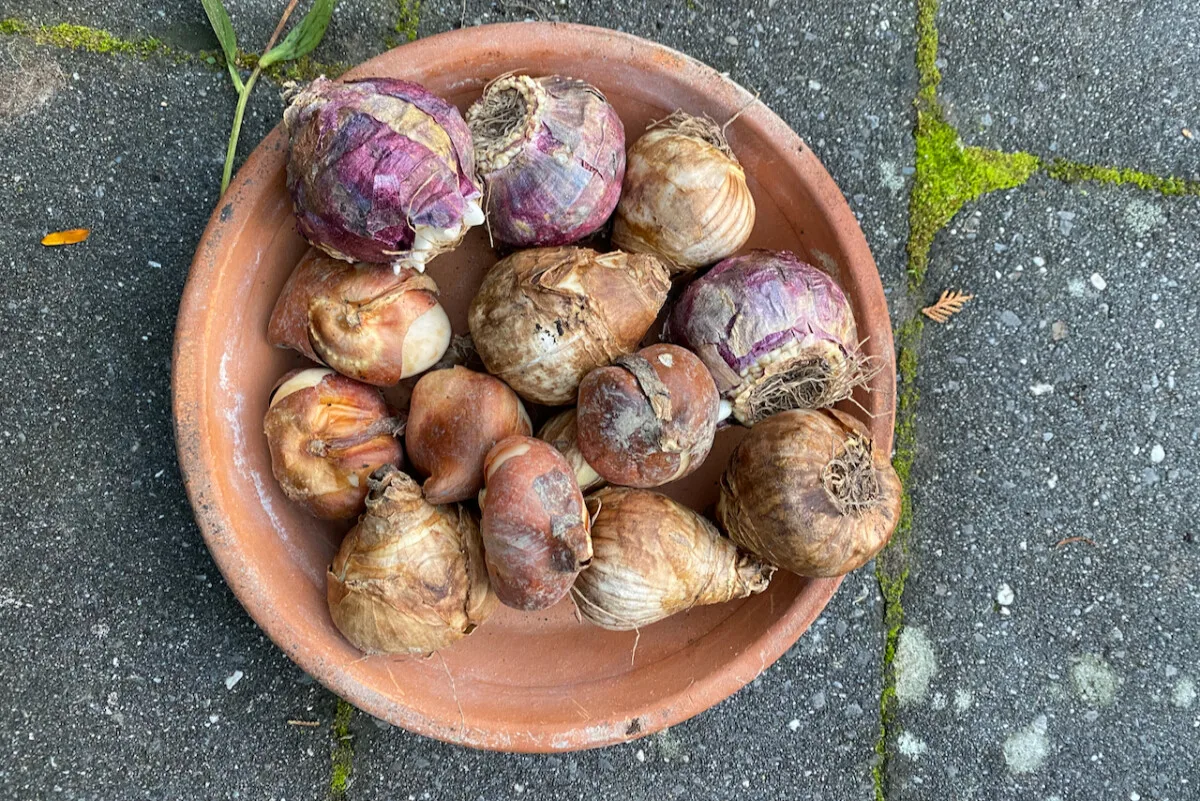
Due to the organic growing method, not all the bulbs can be super-standardized. The vendor tries, as much as possible, to add only high-quality bulbs to every order they receive. But it’s unavoidable that at the end of the selling season (often late November or early December), they are mostly left with the runts. In the interest of avoiding waste, they sell the seconds at a discount. But then it’s up to you to take chances with what you’re planting.
Another reason to get your bulb order placed early is because less common bulbs will sell out early. Sure, I could order tulip bulbs all season long. But when it comes to more niche ones (such as camassia, fritillaria or chionodoxa, for example), vendors only get in a limited amount. Once they’re gone, they’re gone.
2. Planting your bulbs too early in the fall.
Ok, you got your gardening tasks super organized, set a reminder, and bought your spring bulbs early. Straight in the ground they go, right? Hold your spade!
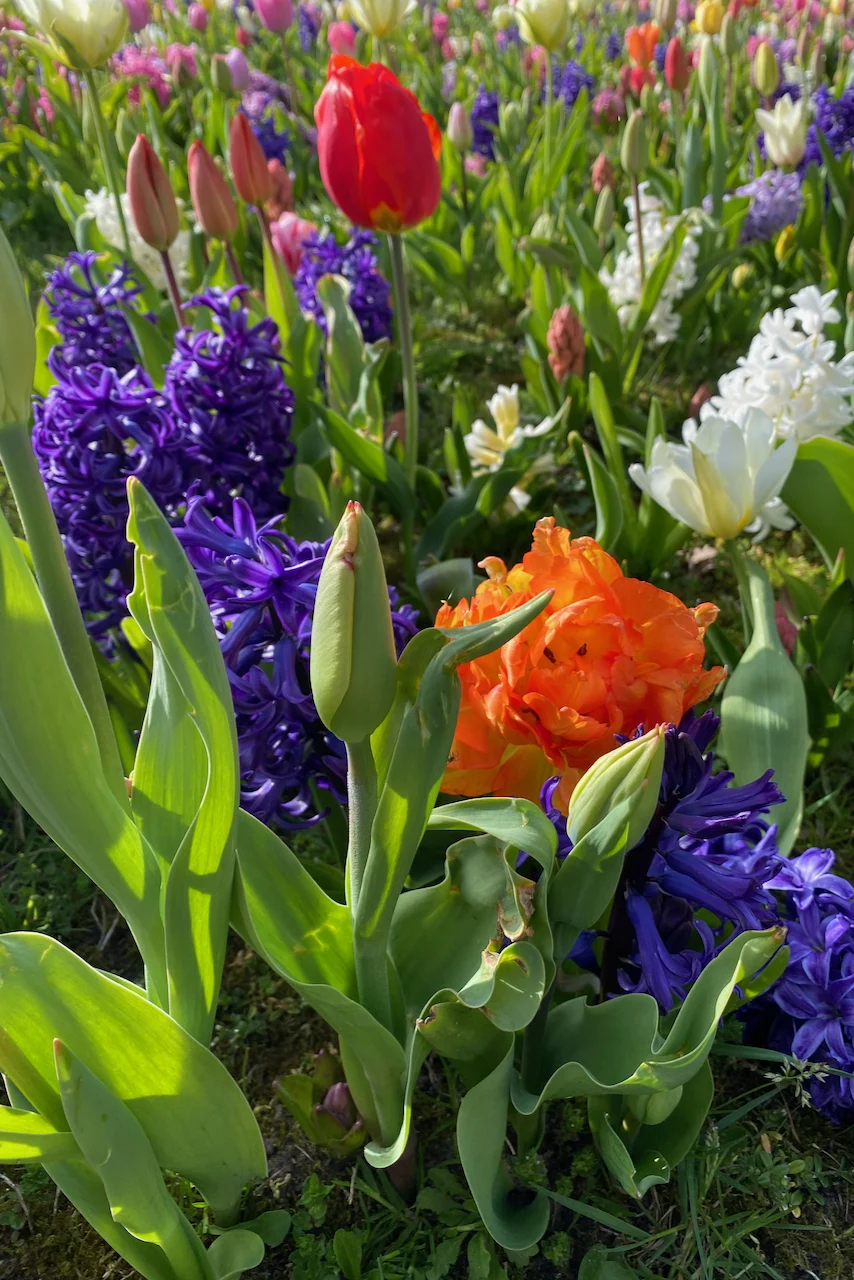
You can plant spring bulbs from September until December. BUT (and it’s a big BUT!), the soil needs to have cooled enough when you do it. For optimum blooms next year, your bulbs need to be planted at a temperature that constantly stays below 60F (about 16C). Lower than that is ok too, but higher might become problematic.
First of all, the warm soil might trick some spring bulbs into starting to sprout prematurely. Then the cold, freeze and snow will damage that young growth and rob you of a flower next spring. Some bulbs might flower again the following spring, but will do so on secondary growth that won’t be too robust.
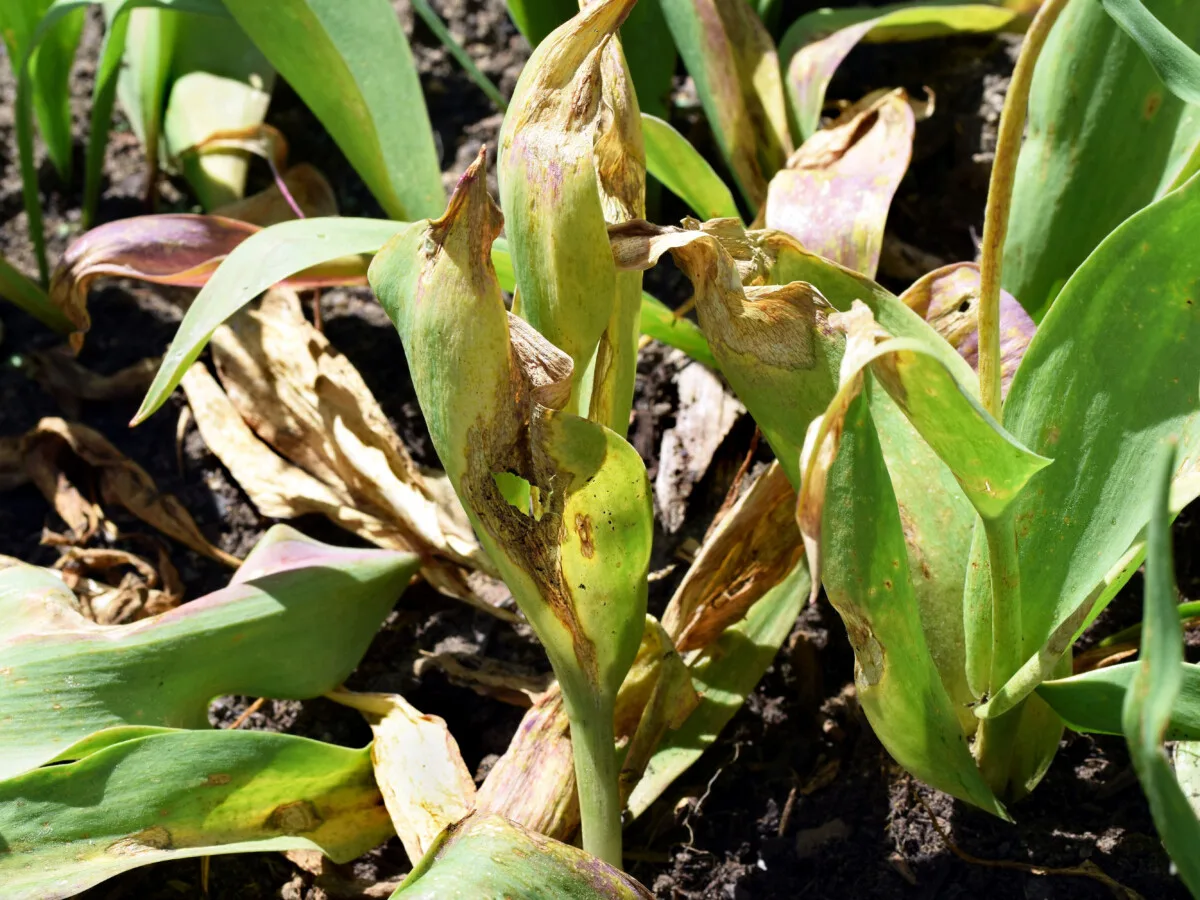
Another reason why planting in warm soil isn’t a good idea is because of a disease called tulip fire (Botrytis tulipae). It is a fungal disease that causes the tulip leaves to grow twisted and distorted. It also affects the flowers. An infected bloom will either not open at all or open already rotted. Damp and warm soil encourages the proliferation of this fungus; so the more patient you are for the weather to turn cold, the better.
3. Thinking it’s too late to plant bulbs and putting it off until next year.
Listen, I can’t predict the winning lottery numbers. But for what it’s worth, I can accurately predict one thing. In December, there will be at least five posts in my local gardening Facebook group with one theme in common: I found this bag of bulbs in a corner of my garage/attic/shed/basement. Is it too late to plant them?
To which the replies will start pouring in. Yes, get them in the ground! Don’t throw them out! Don’t wait until next year! All is not lost! What can I say, we’re not a high drama group, but we hate seeing good bulbs go to waste.
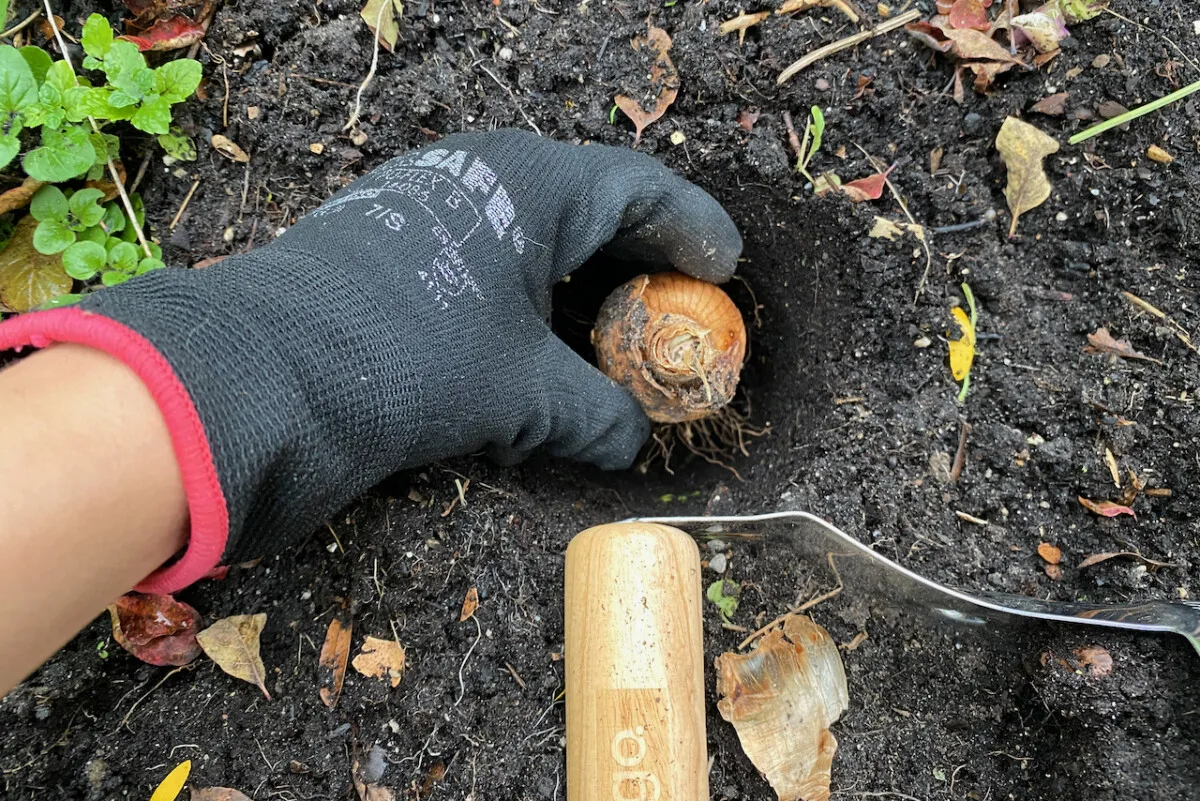
In my opinion, one bulb in the ground is worth two in the bag. And if your ground hasn’t frozen over – meaning if you can still dig – go ahead and plant those bulbs. Who cares if it’s Christmas Eve?! Sneak out while you’re waiting for Santa and plant them bulbs. Most spring bulbs will need eight to ten weeks of cold temperatures for an optimum bloom. But even less time in the ground is better than no time in the ground.
As far as I’m concerned, it’s better to err on the side of planting late in the year than planting too early (see previous mistake). If you’re planting late, give the bulbs a good mulch to keep the temperature and humidity even. This will encourage the plants to grow feeder roots that will start sustaining the bulbs until spring.
4. Planting them where you want them, not where they’ll thrive.
Location, location, location may make you think of a real estate broker, but it’s also a good rule of thumb to follow when we’re talking about planting. And the old saying “right plant in the right place” very much applies to bulbs.
Not all bulbs have the same needs, so planting the right bulb in the right place can help us maximize the flower display while at the same time shaving off hours of maintenance work.
Here’s what this philosophy applies to spring bulbs.
Woodland bulbs will thrive and perennialize if you plant them in a location that resembles that in which they grow in the wild. That means half-shade or full shade. Plant them under a tree or hedge canopy or along a wall or fence that protects them from full sun.
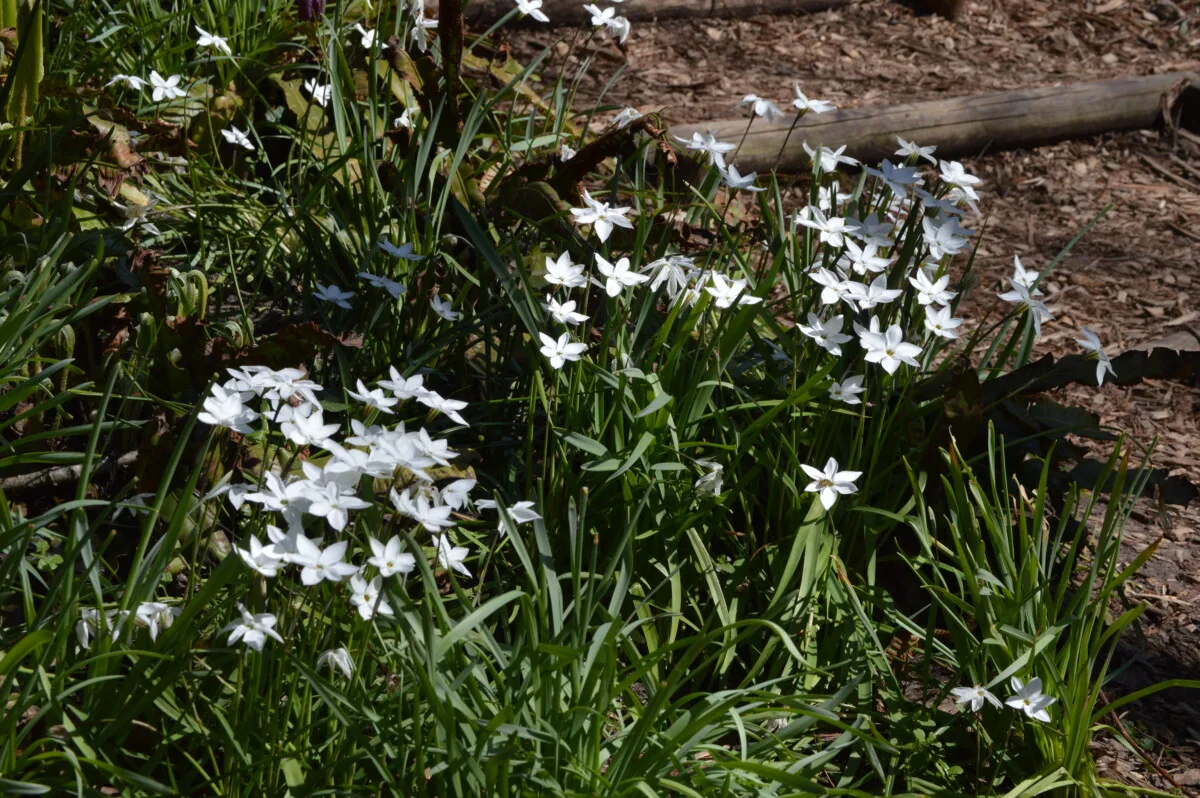
A few examples of woodland bulbs include crocuses, snowdrops, bluebells, chionodoxa, wood anemone, camassia and botanical tulips.
On the other hand, bulbs that put on a very showy display of flowers will always need more sun and more heat. That’s why you should always aim for as sunny a location as possible for bulbs such as tulips and hyacinths.
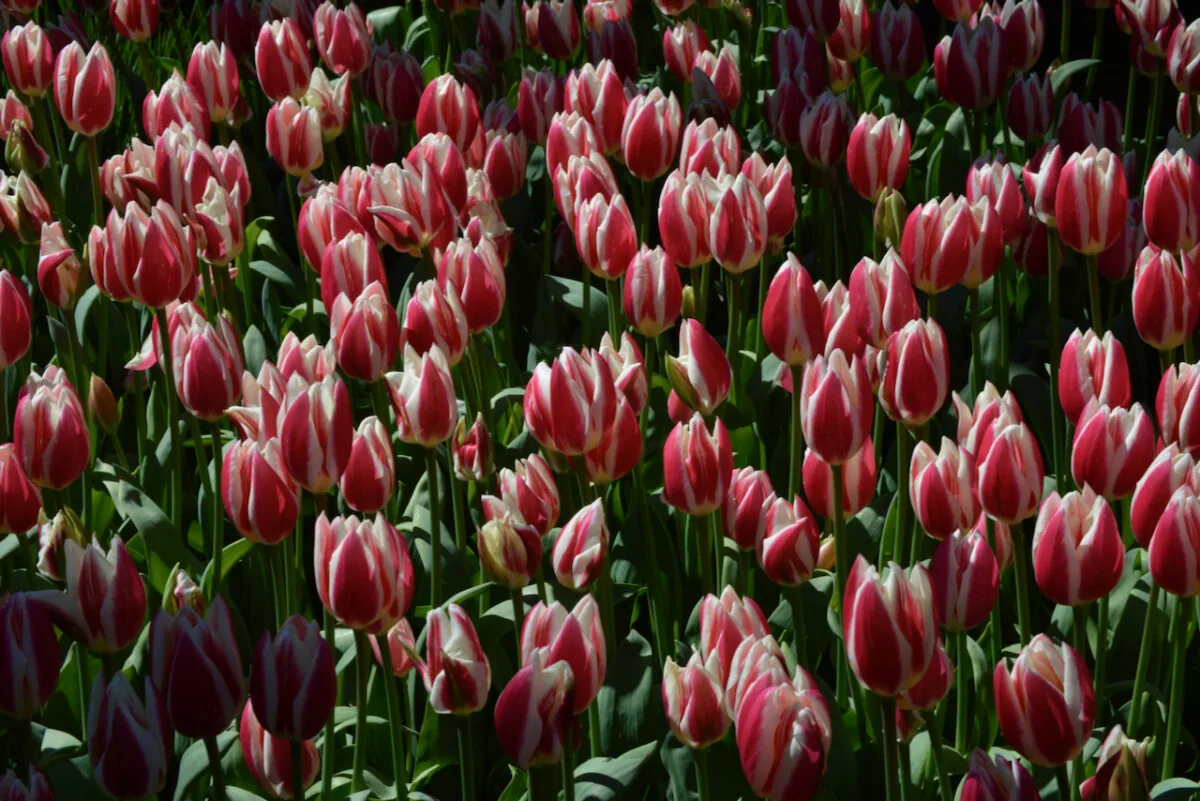
5. Not planting the bulbs deep enough.
I think that there’s often a bit of confusion between these two pieces of information:
- Plant the bulb deep enough to protect it from cold vs.
- Bulbs need at least eight to ten weeks of cold in order to flower properly in spring.
So let me try to clear that up. We’re planting the bulbs deep enough not necessarily to protect them from cold. But to protect them from variations in temperature. That also includes shielding them from temperature spikes that would trigger premature sprouting in winter.
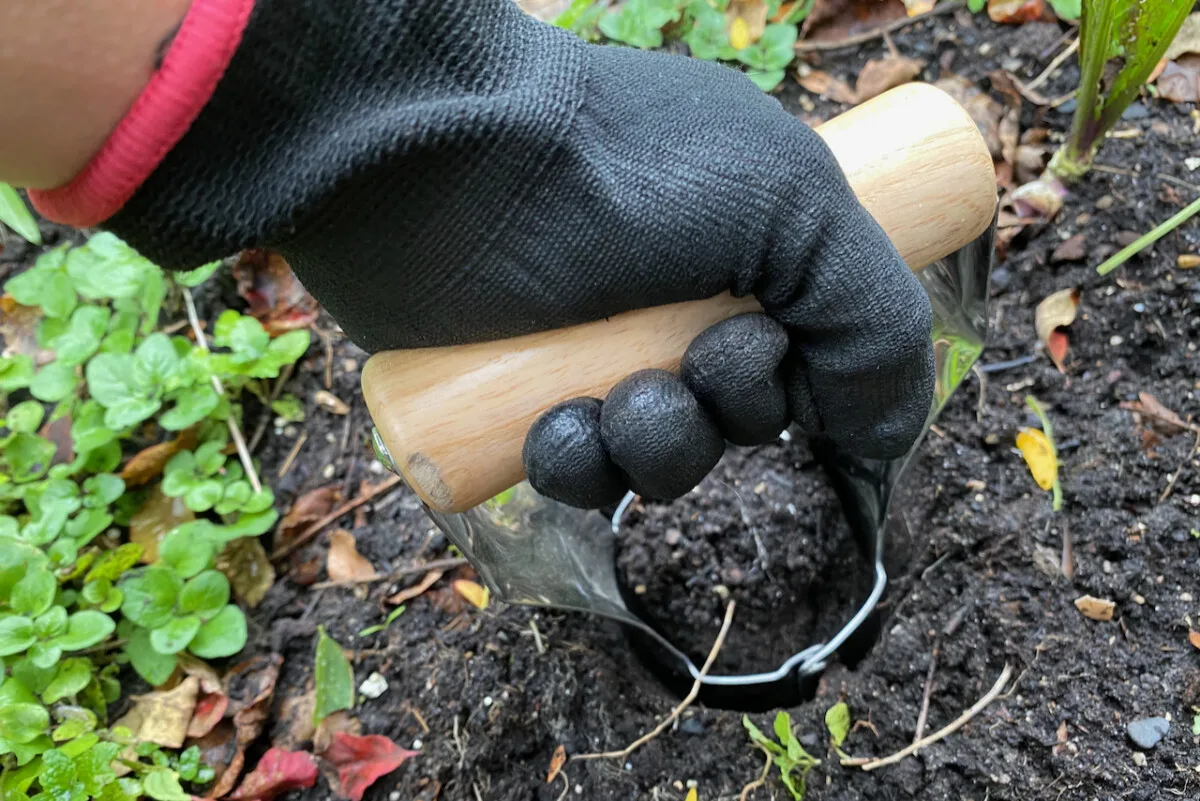
Another reason why it’s better to err on the side of planting them too deeply rather than too shallowly has to do with soil moisture. Again, we’re aiming to prevent them yoyo-ing between too dry and too wet all winter long. This would certainly affect the quality of the flowers come spring.
So what’s the right depth for planting bulbs?
About three times the height of the bulb. So if you have a two-inch bulb (about five centimeters, root to tip), plant it about six inches deep (that’s around 15 centimeters). Naturally, by this yardstick, you don’t need to dig that deep for smaller bulbs.
And speaking of yardsticks, since I’m not really good at approximating depths, I bought myself a tool that makes the job easier. It’s a bulb planter that’s etched with inches (and centimeters) so I don’t have to guestimate every time I bury a bulb. It’s really easy to use. Just press it down at the desired depth, twist to collect the dirt and pull it back up. All you need to do is drop the bulb in the hole left behind and cover it up using the soil in the bulb planter.
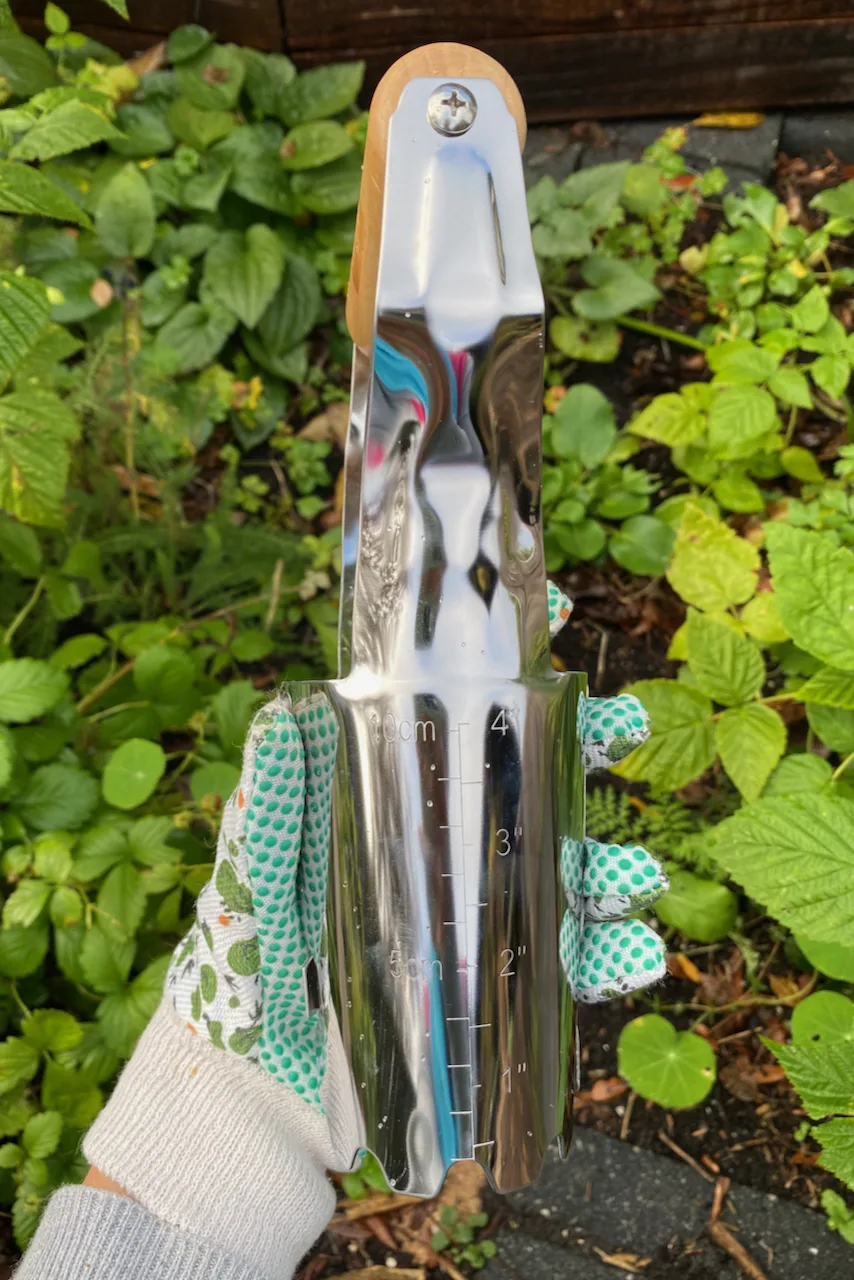
If you don’t want a separate tool for planting bulbs, you can also find etched trowels that will do the job. Have a look at this guide I wrote on a few other bulb planting tools that will make this job a breeze.
6. Not paying (enough) attention to aesthetics.
With most of this article covering practical tips, I thought I should at least group together some tips on bulb garden design.
One mistake I made in the past was planting the bulbs a bit too far apart. As a newbie, I was just following the spacing instructions on the bag. But when the flowers came up in spring, the whole display looked a bit ridiculous. It was so spaced out; it was taking up so much yard space with so few bulbs.
I now plant my bulbs closer together, especially the smaller ones that don’t have thick foliage. It looks like a cohesive and intentional patch rather than flowers scattered about by the wind.
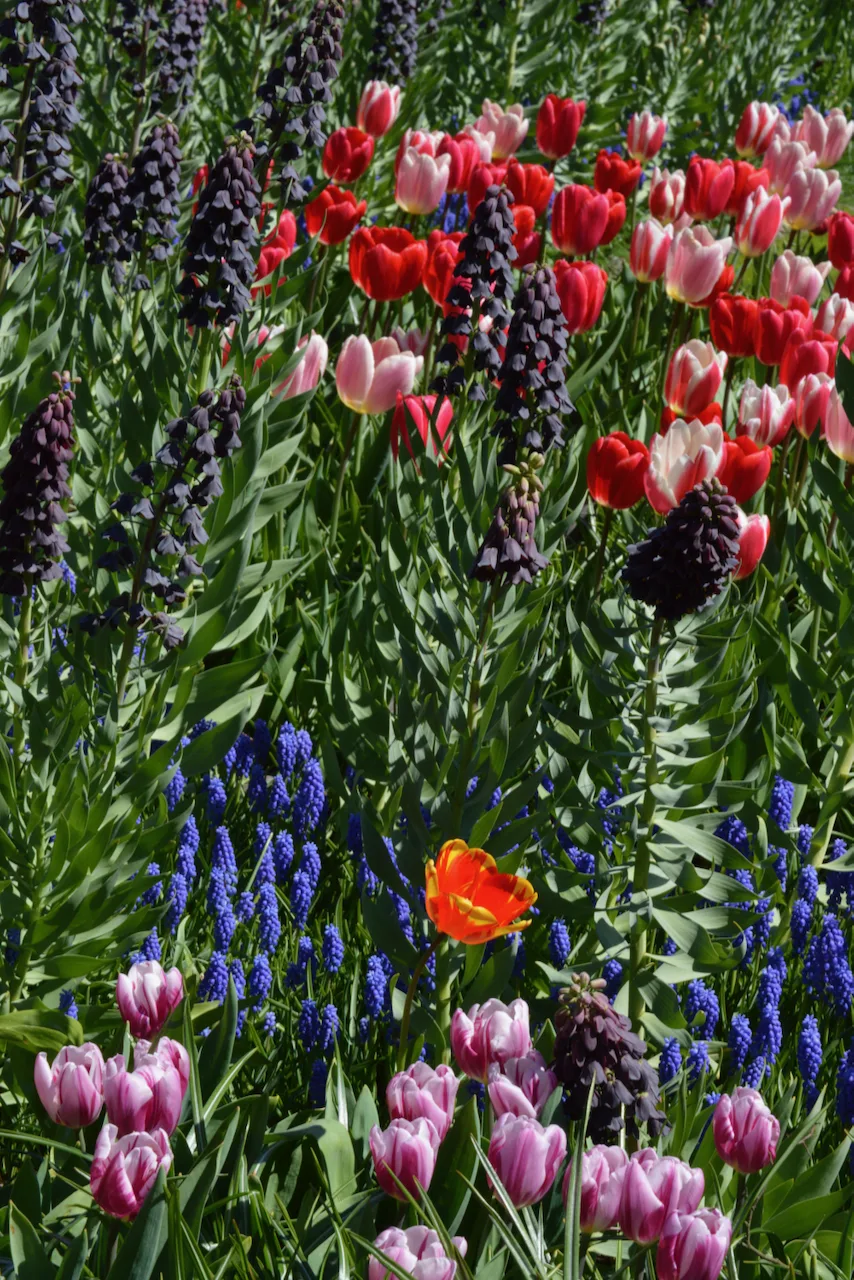
And speaking of avoiding unimpressive displays, I’ve now become a big fan of planting a mix of spring bulbs rather than just one variety. Remember those “niche bulbs” I mentioned you should buy early? Planting more of them into your bulb patch will produce that “display garden” effect we crave when we visit bulb farms in spring. (No? Just me?)
So in addition to the classic tulips, hyacinths and daffodils, you can also add some fritillary, glory-of-the-snow (Chionodoxa) or wood aconites (Eranthis hyemalis) to your spring garden.

Get the famous Rural Sprout newsletter delivered to your inbox.
Including Sunday musings from our editor, Tracey, as well as “What’s Up Wednesday” our roundup of what’s in season and new article updates and alerts.


